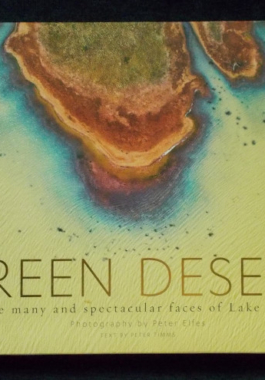If you got a call that Batman was assaulting Spider-Man and the person who called it in was Marilyn Monroe, who is actually a 6'3" transvestite, there's only one place you could be: nothing is too weird in Los Angeles. For the cops of Hollywood Station, policing crack-heads dressed as cartoon characters is business as usual. But when there's a diamond robbery connected to the Russian Mafia and a pair of totally clueless and ambitious crystal meth addicts, the pieces have got to be put together by the sergeant they call the Oracle and his squad of street cops. There's Budgie Polk, a twenty-something firecracker with a four-month-old at home; Wesley Drubb, a rich boy who joined the force seeking thrills; Fausto Gamboa is the tetchy veteran; and Hollywood Nate, who never shuts up about movies. They spend their days in patrol cars and their nights in the underbelly of a city that never sleeps. From their headquarters at Hollywood Station, they see the glamour city for what it is: a field of land mines, where the mundane is dangerous and the dangerous is mundane.
- Sorry, this product is unavailable.
-
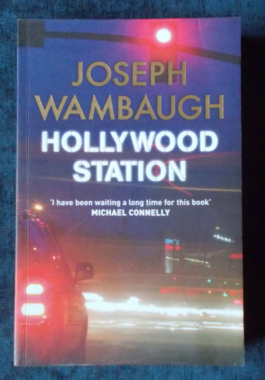
-
 A profoundly original and thought-provoking book - a critical appraisal of the evolution of science fiction and the part it plays in society today. Intelligent and highly credible, a glimpse of a future in which science fiction has become science fact. An extraordinary blend of memoir, critical analysis of SF, utopian thinking and essays on the nature of dream and the brain, all of which come together brilliantly. Aldiss writes clearly and with conviction and though this book was written in the early 60s, this is taken into account by Aldiss himself.
A profoundly original and thought-provoking book - a critical appraisal of the evolution of science fiction and the part it plays in society today. Intelligent and highly credible, a glimpse of a future in which science fiction has become science fact. An extraordinary blend of memoir, critical analysis of SF, utopian thinking and essays on the nature of dream and the brain, all of which come together brilliantly. Aldiss writes clearly and with conviction and though this book was written in the early 60s, this is taken into account by Aldiss himself. -
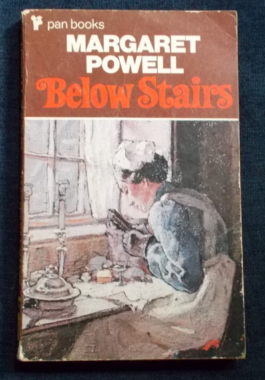 These are the REAL below-stairs stories from the time of servants, lords, ladies and the great divide between Upstairs and Downstairs. Margaret Powell - shrewd, unabashed and wickedly funny - was originally interviewed on radio in the late sixties to talk about her life as a servant and the response was so intense that it spawned a series of books of her experiences. Read about the household where she had to iron the bootlaces; the guest who kept hot potatoes in her cleavage...not to mention the gentleman who like to stroke the housemaid's curlers (!). You couldn't invent these stories.
These are the REAL below-stairs stories from the time of servants, lords, ladies and the great divide between Upstairs and Downstairs. Margaret Powell - shrewd, unabashed and wickedly funny - was originally interviewed on radio in the late sixties to talk about her life as a servant and the response was so intense that it spawned a series of books of her experiences. Read about the household where she had to iron the bootlaces; the guest who kept hot potatoes in her cleavage...not to mention the gentleman who like to stroke the housemaid's curlers (!). You couldn't invent these stories. -
 Author John O'Grady's (Nino Culotta) father, with no practical experience and very little money, threw up city life and became a farmer - he bought his land, worked hard, applied the latest scientific methods - and went broke. Yet O'Grady has wonderful memories of growing up on the farm near Tamworth and recounts them all here with his usual wry humour.
Author John O'Grady's (Nino Culotta) father, with no practical experience and very little money, threw up city life and became a farmer - he bought his land, worked hard, applied the latest scientific methods - and went broke. Yet O'Grady has wonderful memories of growing up on the farm near Tamworth and recounts them all here with his usual wry humour. -

 A group of convicts escape from Norfolk Island in a boat. Only one survives - by killing and eating his companions en route for sustenance until he arrives on Badu Island. He takes over leadership of the natives by besting - then decapitating - the chief. The natives believe him to be the reincarnation of Wongai, friend of the gods, and accept him without question. Their acceptance is tinged with reverence when theydiscover that he is an astute war leader and knows something of agriculture. This tale of the European convict who rose to power in the 1840s as a tribal chief, is based on fact - from the ships log of the HMS Rattlesnake, captained by Owen Stanley. Billy Winn, an escaped convict from Norfolk Island, had, through a reign of terror and treachery, cowed the most fearful of all peoples - the Coral Sea headhunters.
A group of convicts escape from Norfolk Island in a boat. Only one survives - by killing and eating his companions en route for sustenance until he arrives on Badu Island. He takes over leadership of the natives by besting - then decapitating - the chief. The natives believe him to be the reincarnation of Wongai, friend of the gods, and accept him without question. Their acceptance is tinged with reverence when theydiscover that he is an astute war leader and knows something of agriculture. This tale of the European convict who rose to power in the 1840s as a tribal chief, is based on fact - from the ships log of the HMS Rattlesnake, captained by Owen Stanley. Billy Winn, an escaped convict from Norfolk Island, had, through a reign of terror and treachery, cowed the most fearful of all peoples - the Coral Sea headhunters. -
 He was an accomplished organist and interpreter of Bach, a crusader for world peace, and a winner of the Nobel Peace Prize. He made his philosophy of "reverence for life" an ethic for the world. The hospital he founded in Lambaréné (still in operation in present-day Gabon) is a model of what Europeans might have given to Africans throughout colonial history. But above all, Albert Schweitzer (1875-1965) was a talented and compassionate human being. This biography probes beyond the timeworn image of Schweitzer as "the old man in the pith helmet" to reveal the philosopher, scholar, husband, father, humanitarian, and liberal rebel in a conservative church. Illustrated with black and white photographs.
He was an accomplished organist and interpreter of Bach, a crusader for world peace, and a winner of the Nobel Peace Prize. He made his philosophy of "reverence for life" an ethic for the world. The hospital he founded in Lambaréné (still in operation in present-day Gabon) is a model of what Europeans might have given to Africans throughout colonial history. But above all, Albert Schweitzer (1875-1965) was a talented and compassionate human being. This biography probes beyond the timeworn image of Schweitzer as "the old man in the pith helmet" to reveal the philosopher, scholar, husband, father, humanitarian, and liberal rebel in a conservative church. Illustrated with black and white photographs. -
 The author's mother, Angela Thirkell, divorced his father when he was a child and brought him to Australia with her new husband. In his earlier memoir The Road to Gundagai he mentions that he eventually became aware of the continued existence of his real father; his second memoir, Humping My Bluey, concluded with him ready to cross the ocean to Canada in search of the man he had not seen in seventeen years. This book tells how he found his father - and how a young man discovered a great new country and homeland. Illustrated with black and white photographs.
The author's mother, Angela Thirkell, divorced his father when he was a child and brought him to Australia with her new husband. In his earlier memoir The Road to Gundagai he mentions that he eventually became aware of the continued existence of his real father; his second memoir, Humping My Bluey, concluded with him ready to cross the ocean to Canada in search of the man he had not seen in seventeen years. This book tells how he found his father - and how a young man discovered a great new country and homeland. Illustrated with black and white photographs. -
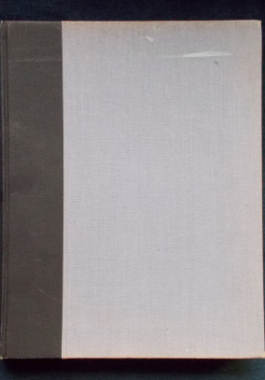
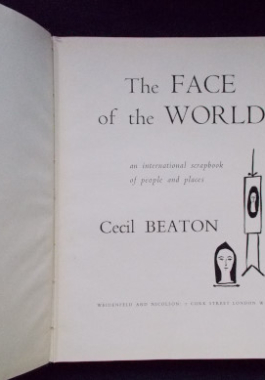 Cecil Beaton travelled the world, photographing the changes and signs of recovery that took place post World War II and of the active talented people from the fields of art, politics and literature who were responsible for much of the tone, tenor and societal change in that decade. Beaton describes his book as a 'pot-pourri' of pictures and texts '...gathered together in the hope of creating some sort of impression of what might be called a decade of revival.' Illustrated with sketches and photographs by Cecil Beaton.
Cecil Beaton travelled the world, photographing the changes and signs of recovery that took place post World War II and of the active talented people from the fields of art, politics and literature who were responsible for much of the tone, tenor and societal change in that decade. Beaton describes his book as a 'pot-pourri' of pictures and texts '...gathered together in the hope of creating some sort of impression of what might be called a decade of revival.' Illustrated with sketches and photographs by Cecil Beaton.



